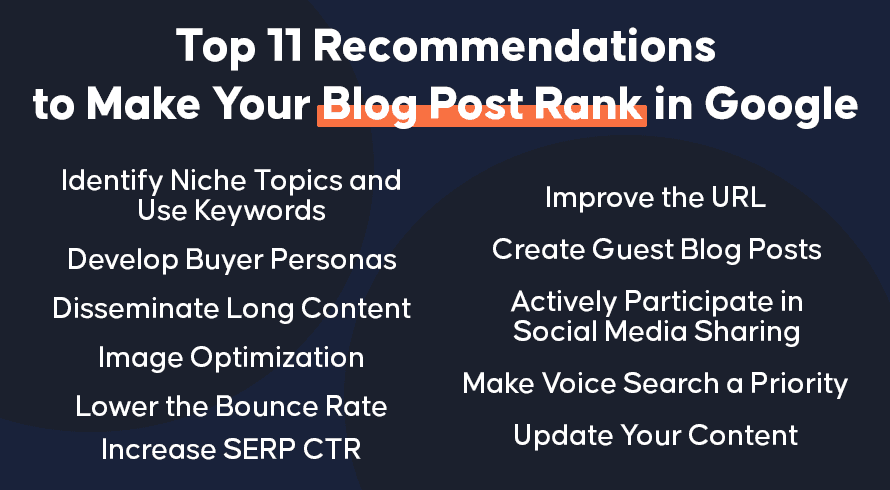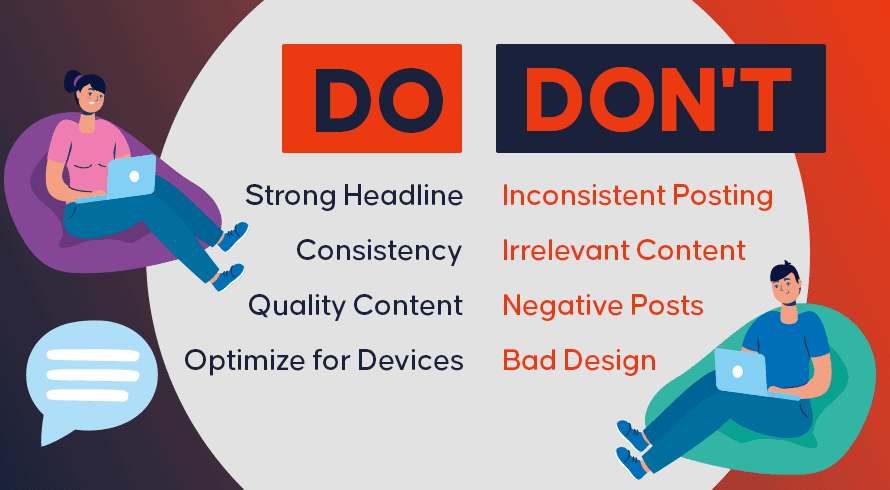Inquivix HQ
1-903, 18 Eonju-ro 146-gil,
Gangnam-gu, Seoul, Korea
06057

Many people have achieved success through the internet. In fact, you could say that most success nowadays comes from being able to effectively use the internet. However, most people still don’t take advantage of the tools available to them through the internet, and because of this, opportunities pass them by. One of the most effective tools currently available to any person on the internet is the use of a blog post.
But writing a good blog post is not enough. You should know how to optimize it in order to get listed by Google, the most popular search engine, to gain a larger audience.
What Is a Blog Post?
Before we go further, it is important that we understand what a blog is. A blog is essentially any written work from a personal perspective and is less formal than traditional articles written for a particular purpose or format.
The thing is, unlike traditional articles that need to be monitored for accuracy and truth, blogs can be based on just about anything, even unfounded claims. It is a personal account of the writer and thus has more personality than articles that have a certain level of formality that blogs are unhindered by. Think of it as an online diary where people pour out their thoughts and feelings for everyone to see.
However, for a business, the blog is slightly different. It can maintain the witty, informal style of writing. But the content should be credible, informative, and useful to the readers. The primary reasons for writing blogs are to establish online authority, generate sales leads, and build rankings in platforms, such as Google ranking. Basically, blogs are created either for fun, marketing, or business.

What Is SEO Writing?
SEO writing, also known as Search Engine Optimization writing, is used to promote a website’s writing with the purpose of increasing the chance of certain pages appearing on the top pages of search engines like Google, Yahoo, and Bing. The pages that appear on top search engine results pages (SERPs), often follow a set of rules set by the leaders of the company called an algorithm that marketers and bloggers should know about in order to make sure that the blog post they write will be seen by their target audience. Without SEO writing, the chances that your post will even be noticed at all are slim to none.
Top 11 Recommendations to Make Your Blog Post Rank in Google

1. Identify Niche Topics and Use Keywords
The number one thing you need to do in order to make your post rank on Google is to plan your content strategy. Write content that your target audience wants to read, and that means finding niche topics and utilizing keywords that they will be sure to recognize. Write what your audience wants to read!
Run keyword research to determine what keywords are being searched. Google Ads Keyword Planner is a good tool to use for this. Use these high-volume keywords to create a great blog post. Also, make sure to incorporate keywords in your post title as well.
Remember that you are not only writing an article to inform, but you are writing a blog to influence. The more people who read your content, the more likely they are to click! On the internet, content is king, and as long as people click, you win.
2. Develop Buyer Personas
In order to better rank in search engines, you should better understand your customers or the people who are more likely to click on your content. Think of the ideal customer and their general behavior. Create a buyer persona for your target audience and base your writing on their profile and make sure to track your progress; otherwise, you won’t know what works.
3. Disseminate Long Content
Long content produces higher search rankings. If you look at the current trend in the first pages of search rankings, those who produce longer content are more likely to rank higher than those who write shorter content. Longer content is seen by the algorithm as more valuable than short content, and online traffic shows it is more likely to be shared and engaged with by readers, which further improves the ranking of the blog post. Usually, for a blog, a minimum word count of 1000 should be set.
4. Image Optimization
Adding images to your blog makes it seem more professional and credible. The rule of thumb here is to choose the best photo you can for the blog, but not so good that it affects other factors such as loading times. We live in a time where we get what we want practically instantly, and that goes double for online resources. A blog with unoptimized images can push readers away by making the page take longer to load.
5. Lower the Bounce Rate
A bounce rate is when a user enters your site but does not look at other content on the page or engage in any way or form. This is a measure of how relevant your content is to your users. A high bounce rate means that they just clicked on the page, read the content, but were not influenced enough to read more or participate in calls to action. Make sure you have relevant content that the audience would like to engage with and read. Use tools like Google Analytics to learn about your audience interaction with your content.
6. Increase SERP CTR
CTR, or click-through rate, is essentially the percentage of people who clicked to go to the page out of all the people who saw the search results. The only real way to improve your click rate is to improve the impression users get from their particular searches. Make your headlines or clips interesting or relevant to the particular keywords or phrases the blog post is optimized for.

7. Improve the URL
A URL or Uniform Resource Locator is commonly called a web address. A blog’s web address affects how people see it. Make the web address somewhat credible so that people who go to the page will be convinced of the site’s credibility for its purpose. Make the web address relevant or related to the search and give the reader a clear idea of what kind of web page they have entered.
8. Create Guest Blog Posts
Writing for other websites is a great way to get traffic to your blog posts. The effort guest writers spend writing content for other websites is rewarded by increasing the likelihood that people from that site will visit the site of a guest writer, especially if they provide a lot of value for the reader. However, make sure that the guest blog written is also related to the page that you want to link to. Guest posts are a great way to increase your visibility and external links which in turn will affect your google rankings.
9. Actively Participate in Social Media Sharing
Social media is currently one of the most powerful marketing tools that exist for anyone. It not only expands the reach of your blog post but also assumes that the people who have read the blog and shared it on social media accounts have people with similar interests who are more likely to click through to your site.
An additional benefit of sharing on social media is that it takes advantage of the trust people have with their friends, family, and other people in their network. Posts shared by friends and family have the impression of credibility since people assume that the shared post has been reviewed and verified by the sharer.
10. Make Voice Search a Priority
Current technology allows users to converse with their gadgets, and the gadgets have become sophisticated enough to understand what is being said and execute simple commands. Optimizing for voice search is becoming more and more popular since more people are beginning to use this technology. In fact, the growing number of users who use voice search is increasing at such a rapid rate that soon most of the searches will be conducted using voice commands for developed countries. Optimizing your web pages and blog posts for voice search will affect your Google ranking factors.
11. Update Your Content
Algorithms change, and they change a lot. Google search algorithm is no exception. A blog post should be continuously updated depending on the changes made by the search engine algorithm to remain relevant to users and maintain their top spots. Otherwise, competitors will more likely overtake the page. Remember that the higher-ranked posts are more likely to have more traffic than those lower-ranked.
Blog Post Dos and Don’ts according to Google
As with everything, blog posts have good and bad practices. Learning what not to do will work well for your ranking on Google search results. Here are some blog post dos and don’ts according to Google.
Dos
Successful blogs have strong headlines, post frequently, strategically use keywords, use graphics, write long pieces of content, and are frequently shared on social media.
Strong Headline
A strong headline gets the attention of the user and thus more people click. Make sure that the keywords used for the blog post are relevant and used in the post title. The users will easily discover your post and be interested in them. Do keyword research to find out what the readers are looking for.
Consistency
Post often since Google’s algorithm puts pages that are constantly being updated higher than less often updated pages.
Quality Content
Using videos and graphics gets more attention and makes the blog seem more professional if used correctly. Write long content and give value to your readers. And share it on social media to increase the reach and relevance of the blog. High-quality content will keep the readers interested and engaged.
Optimize for Devices
In addition to this, since most people read on their phones, it is recommended that a good blog post be optimized for mobile users. This will help with pages ranking higher on search results.

Don’ts
Not all blogging practices are good. In fact, there are blogging practices that would make you rank lower in Google’s SEO ranking. Some of these are inconsistent posting, posting irrelevant topics, producing negative posts, using webspace poorly, being difficult to read, and a lack of value.
Inconsistent Posting
Users usually stick with blogs that are consistently posting content. Inconsistent posting will lead readers to other sources of information that they can rely on to give them consistent information.
Irrelevant Content
Content containing irrelevant topics would put off users since they would be expecting a particular kind of content when they entered a particular page.
Negative Posts
Negative posts, on the other hand, are generally avoided by users if they can. However, there is a market for negative posts. But if you are a business trying to establish authority, this is a big don’t.
Bad Design
Web spaces should be designed well and must give a feeling of professionalism and credibility. Having an unappealing website would undoubtedly turn off many users. This means that content should be written and formatted in such a way that it will be easy to load and read across a wide range of devices.
Blog Post Ideas to Increase Traffic and Engagement
Content is king, and if you want a blog post to succeed, then you need to make content that people will want to read. I repeat this often because it is true. No matter what kind of topic you have, as long as readers get value from the post, they will return. However, here are some ideas that can give you more traffic and engagement.
1. Be Relatable
If people wanted to read about technical stuff, they would buy a book, but they come to particular blog posts expecting to get information that they would not find anywhere else. They came to the blog because the author is someone they can relate to and who seems human rather than robotic, aloof, and distant. Make people see that you are a person they can relate to and trust. A good blog post would provide relevant information without sounding too technical for normal readers to understand.

2. Be Vulnerable
Nowadays, people find the myth of invulnerability quite suffocating. They want people who are flawed like them but have succeeded. Posting about your difficulties and struggles can become a great way to connect with users and make sure that they return. If you are in business, use your blog post to discuss the struggles you faced and how you overcame them. This will help you to connect with your readers and build trust.
3. Write about Trending Topics Related to the Industry
Ride the coattails of trending topics to get more traffic to your page. Understanding trends and user behavior means that you are able to get their attention easily and get people who were not previously interested in your particular topics interested.
Making a successful blog is not easy. It takes a lot of work to make a blog trend or go viral. However, you don’t need to go viral to get the benefits of the system. Sometimes, getting people to see you on the top page of search engines is enough for benefits to be seen. Hopefully, the advice written here will help you get the internet success that you deserve.
Conclusion
What is a blog post? Well, now you know that everything a blog has, it needs to have a structured, easy-to-follow format and language. A piece of writing cannot always be put on a blog. There are many sites available for posting your blogs. You can create a blog section in your own website too. Using different strategies like linking pages through a guest post will give your blog a good Google ranking. Use these tips to optimize your blog or if you are new start writing your first blog post.
